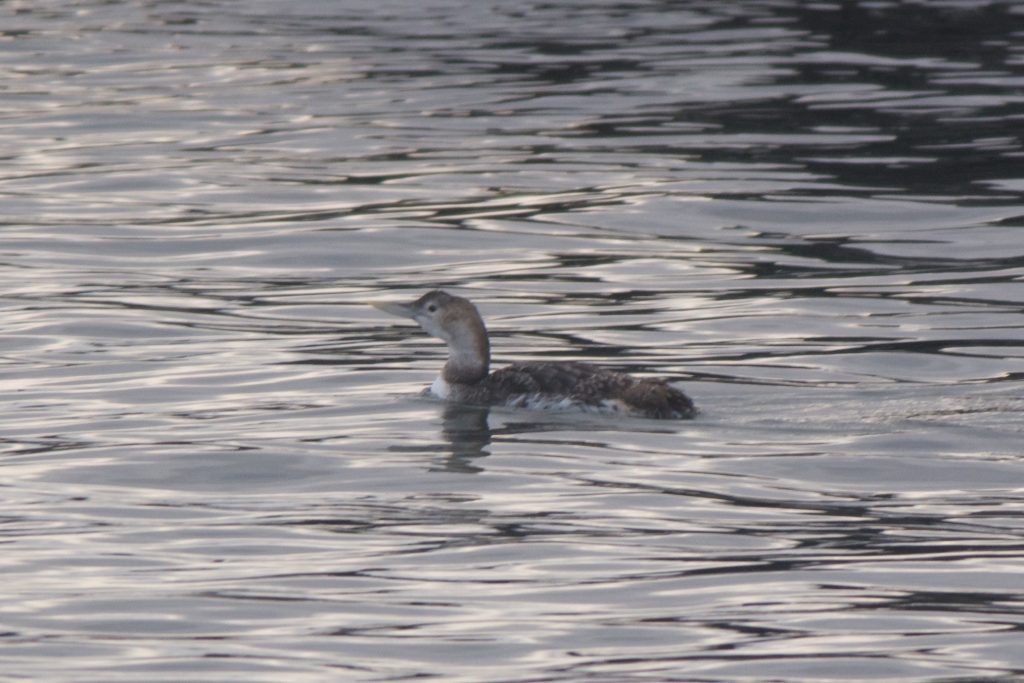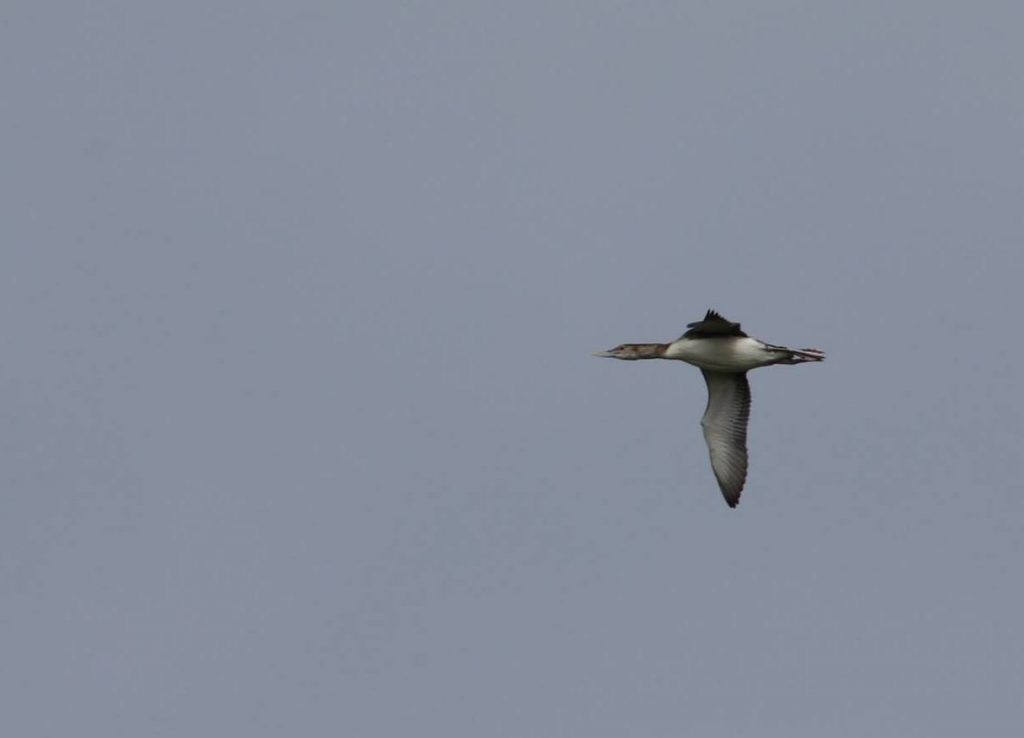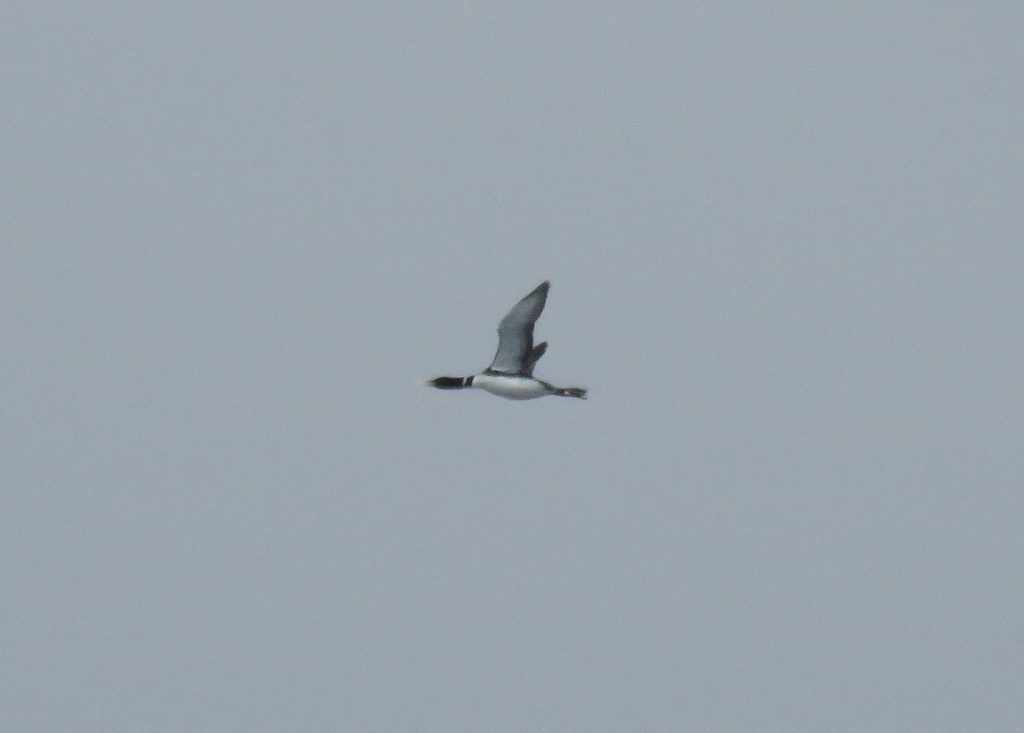A regular spring migrant that is also seen during the summer and fall on a less regular, though nearly annual basis. This is the second most common loon species in the Pribilofs and is best found in late May and early June with a peak in regularity around May 25th and June 5th and only scattered records after June 10th. Summer and early fall records are more sporadic, with sightings during eight years in the 2000s and 2010s scattered through late June, July, and August. Early fall migrants or late summer wanderers are rarely detected during the second half of August and first half of September, with about 10 records from that time period. Typical migration often starts a bit later, during the second half of September, with sightings through mid-October when regular coverage concludes. There are early and late winter records that suggest this species may attempt over-wintering in years with little to no ice in near shore waters or that its migratory period begins earlier and extends later during the year.



